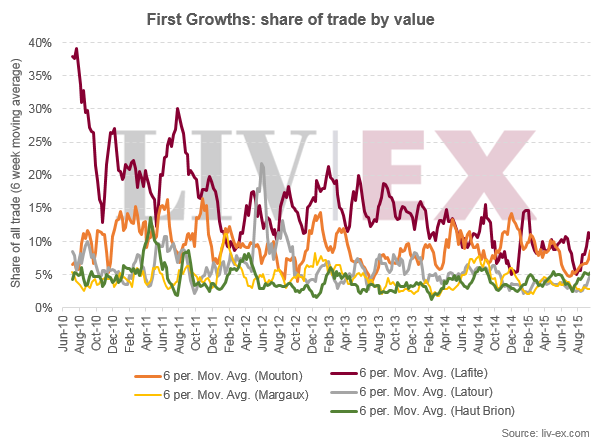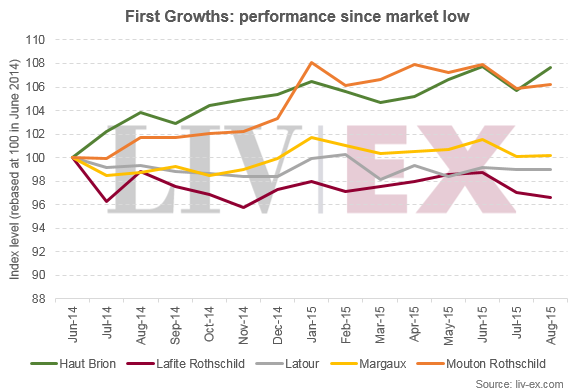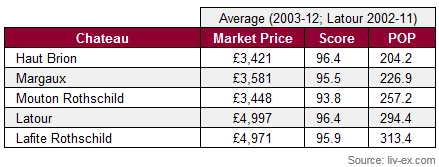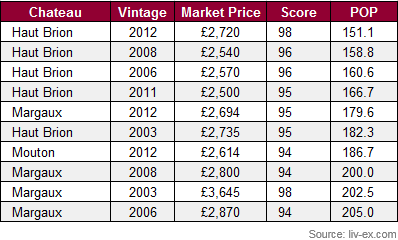Throughout the China-led bull market, Lafite Rothschild dominated trade on the Exchange: during one week in July 2010 the Chateau represented 48% – nearly half – of all trading activity by value. Prices were flying and in November 2010 Lafite commanded an average of a 130% premium over other First Growths in the secondary market. At that time Lafite 2008, which was released with the Chinese number eight – a symbol of good fortune – etched onto the bottle, was trading for as high as £14,450 per 12×75.
As the chart above shows, activity for Lafite has been declining. Last week, it accounted for just 4% of trade on the market. The Lafite index (composed of the latest 10 physical vintages) has fallen 47% since the peak of the market in July 2011 and its premium on the other Premier Cru has been sliding. Lafite 2008 last traded for £4,900, a 65% drop.
Lafite has not always commanded the highest prices: at the beginning of the 20th century, Haut Brion traded at a 20% premium over other First Growths. In the late 90s, Margaux was the most expensive. Are we beginning to see another shift?
Since the market’s low in July last year only Mouton Rothschild and Haut Brion have climbed, as the chart above shows. While Haut Brion – the top performer – has gained 7.7%, Lafite Rothschild has dropped 3.4%. Margaux has run flat.
As shown in the table below, Haut Brion and Latour have the joint highest average scores across the ten most recent physical vintages. However, while Latour currently has the highest average price, Haut Brion has the lowest. This gives Haut Brion the lowest POP* score – Liv-ex’s loose measure of value where the lowest POP indicates the greatest value for money.
Looking at individual wines, Haut Brion dominates the table of those appearing to offer best value. Of the ten wines with the lowest POP scores, five are Haut Brion vintages, four are Margaux and one is Mouton Rothschild. Four of the top five are Haut Brion, and the top spot – the wine appearing to offer the best relative value – is taken by Haut Brion 2012. It has a POP of 151.1. By way of comparison, the wine with the highest POP is Latour 2010: with 100 points and a market price of £8,600, its POP score is 430.
So while Haut Brion has been climbing, it is clear that it still offers relative value. Will it be the next First Growth to take centre stage?
*A wine’s POP score is its price-over-points ratio, our loose measure of value. It is calculated by dividing the price of a nine-litre case of wine by a shortened 20-point score (scores from The Wine Advocate). We have calculated this 20-point score by simply subtracting 80 from the official rating (for barrel-score spreads we use the mid-point of the score), on the basis that any wine under 80 points is unlikely to attract a secondary market. In theory, the lower the POP score the better value a wine is.









